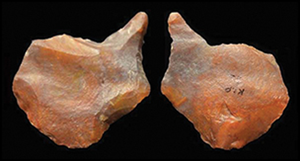Article contents
Palaeolithic occupation and cultural transition in the Wainganga River Basin, India
Published online by Cambridge University Press: 30 March 2020
Abstract

The Pleistocene archaeological record of South Asia is important for addressing questions relating to the origin and evolution of Palaeolithic cultures, continuity or change in lithic technologies, and population dispersals across Asia. Here, the authors report on intensive regional studies to investigate variability within this record, employing field survey, lithic analysis and experimental knapping. They examine Palaeolithic hominin behavioural change in the Wainganga Basin, central India, focusing on variability in spatial distribution, stratigraphy and lithic reduction strategies in Acheulian to Late Palaeolithic sites. This emphasises the diversity of cultural sequences in South Asia and contributes to questions of transition and change based on cultural preferences, raw materials and lithic strategies in different regions.
- Type
- Research Article
- Information
- Copyright
- Copyright © Antiquity Publications Ltd, 2020
References
- 3
- Cited by




